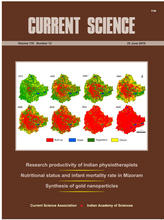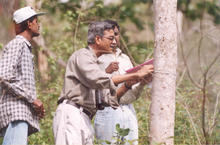Topic:
Stomata: adjusting and responding to environmental changes
Speaker:
Dr. Varsha Pathare , Washington State University
Venue:
https://teams.microsoft.com/meetingOptions/?organizerId=7f0946b2-4cdf-41fb-a935-cbc80034c2a9&tenantId=6f15cd97-f6a7-41e3-b2c5-ad4193976476&threadId=19_meeting_ODBkNDAyOGEtZGFiMy00NTA5LWJlZTItYTQxMDZhY2RjOGRm@thread.v2&messageId=0&language=en-GB
Speaker Bio:
I am a plant ecophysiologist, specializing in ecology and physiology of grasses. My research interests include (1) understanding the adaptations and responses of plant photosynthesis and productivity to changing environments and (2) unravelling the physiological, anatomical and biochemical basis of variation in photosynthetic CO2-uptake and water-use among ecologically and evolutionarily diverse grasses. After completing my master’s degree in Botany from Savitribai Phule Pune University, I joined as a research fellow at Bhabha Atomic Research Center, Mumbai with Dr Penna Suprasanna. My research at BARC demonstrated how mycorrhizal colonization and nitrogen supply modify the accumulation of arsenic in crops like rice and mustard. In 2014, I was awarded the prestigious Australian Discovery Post-graduate Research scholarship to pursue a PhD degree at the Hawkesbury Institute for the Environment, Western Sydney University with Prof. David Ellsworth, and Prof. Oula Ghannoum. During my PhD, I worked at the unique and innovative Eucalyptus Free Air CO2 Enrichment Experiment, where I studied the photosynthesis and productivity responses of understory plant communities from a drought prone ecosystem to elevated CO2 concentrations. My PhD research has challenged the predominant thinking that under elevated CO2, drought prone ecosystems will use less water, accumulate more CO2 in biomass and thus mitigate the effects of climate change. These findings have been published in the journals of Global Change Biology and Nature and are being used for improving global climate change models. Since 2017, I am working as a post-doctoral researcher with Prof. Asaph Cousins at the Washington State University, Pullman, USA. Here, I have identified the key physiological, biochemical, and anatomical traits that determine CO2 and water movement inside the leaves of diverse grasses. Findings from this work have been published in the journals of New Phytologist and Plant, Cell and Environment and have important implications for predicting grassland responses to environmental changes and for devising strategies for crop improvement. Currently, I am characterizing the impact of key leaf anatomical traits on CO2-uptake and water-use at leaf and whole-plant scale in rice mutants.




